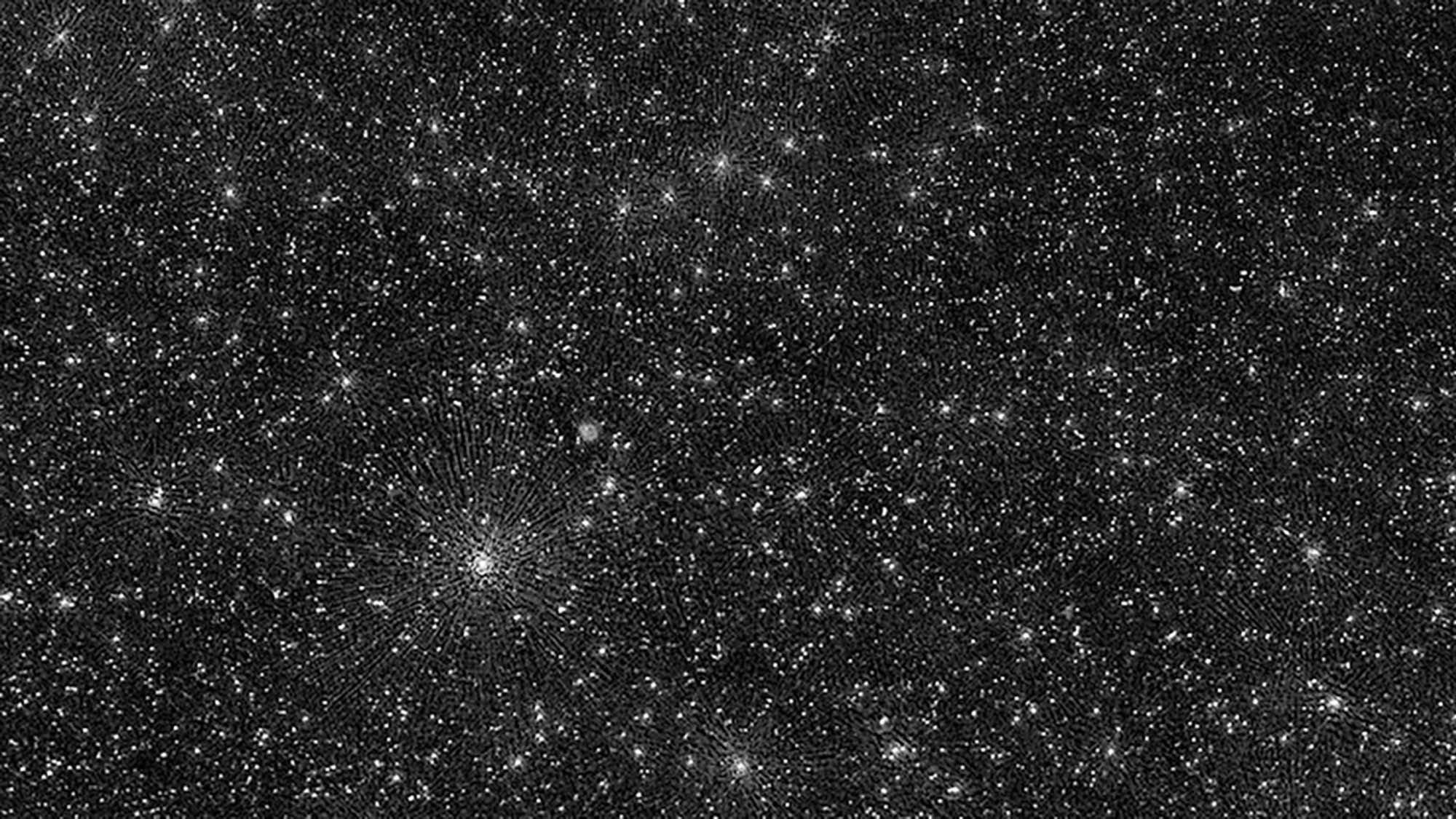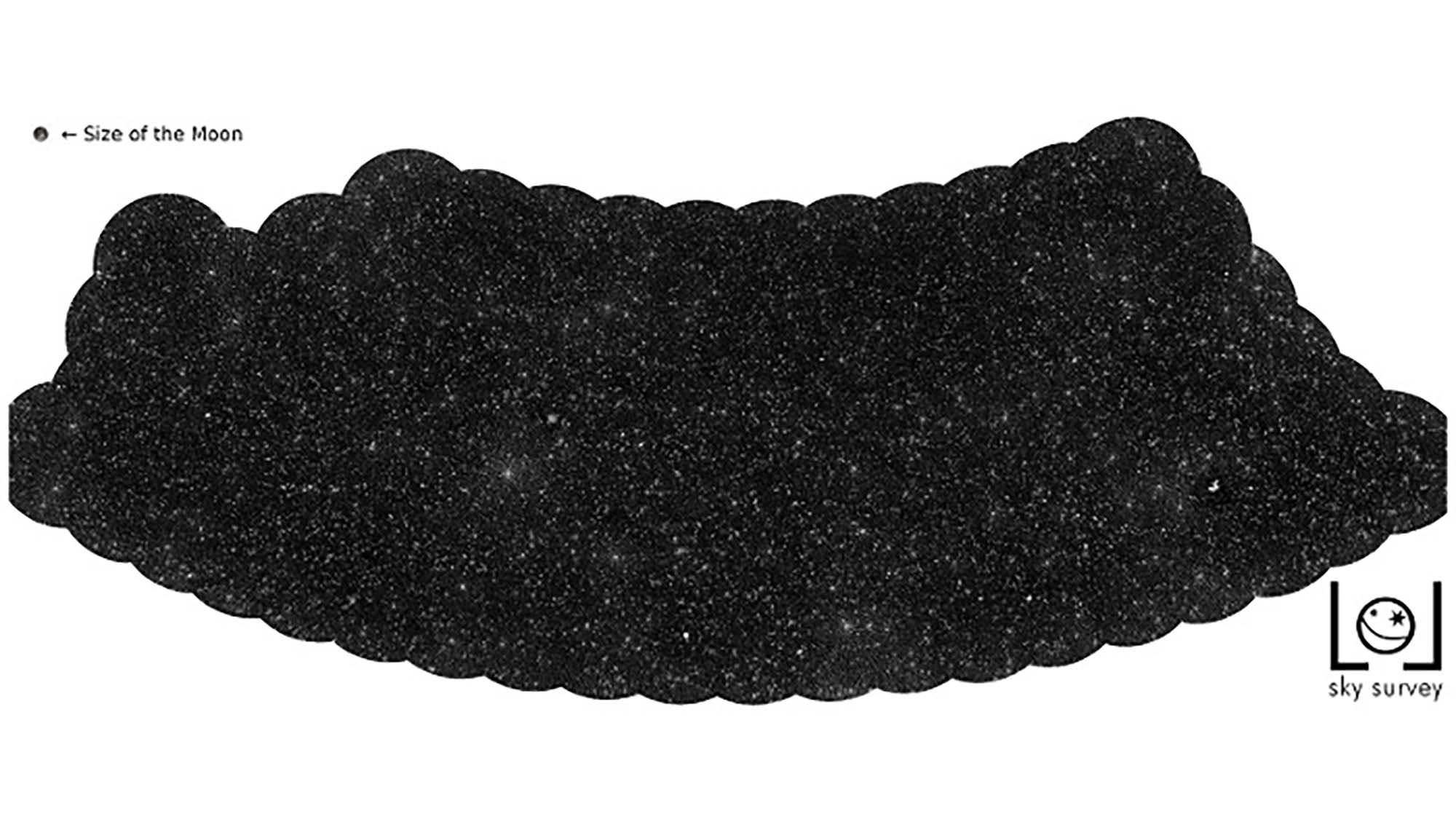Those aren't stars – they're black holes
New map reveals 25,000 supermassive black holes in the night sky

An international team of astronomers just released a remarkable map of the night sky without a single star, but which is instead filled with 25,000 supermassive black holes.
We know what you're thinking. How is that possible if black holes don't radiate light, you silly gooses? That's only half right though. The black hole itself is more or less invisible, but if it's munching on a star or some other object, the tidal forces of its gravity will tear it apart and create a flattened accretion disk around it.
The material in the disk is spinning around the event horizon of the black hole at significant fractions of the speed of light and sometimes that material gets ejected away by the intense magnetic field of the black hole, creating jets of particles at the magnetic poles of the black hole.
These relativistic jets, as they are called, emit a lot of radio waves. This is what astronomers mapped in the northern skies using a network of 52 radio telescopes across Europe known as the Low Frequency Array (LOFAR).

"This is the result of many years of work on incredibly difficult data," said lead researcher Francesco de Gasperin, formerly of Leiden University but now at Universität Hamburg, Germany. "We had to invent new methods to convert the radio signals into images of the sky."
The incredible map shows the low-frequency radio signals from 25,000 supermassive black holes at the center of distant galaxies, and covers only about 4% of the night sky in the northern hemisphere. The researchers hope to eventually create an entire sky atlas of supermassive black holes visible in the northern hemisphere.
The map was included as part of a study that has been accepted for publication in a future edition of the journal Astronomy & Astrophysics.
Get daily insight, inspiration and deals in your inbox
Sign up for breaking news, reviews, opinion, top tech deals, and more.
Analysis: computer algorithms help us see the universe
One of the problems with seeing radio waves from supermassive black holes is that they often produce low-frequency radio waves. Normally this wouldn't be a problem, but for Earth-based radio telescopes, Earth's ionosphere completely reflects radio signals lower than 3MHz and distorts signals up to 30MHz.
"It's similar to when you try to see the world while immersed in a swimming pool," said study co-author Reinout van Weeren, of the Leiden Observatory. "When you look up, the waves on the water of the pool deflect the light rays and distort the view."
In order to counter this, researchers developed a supercomputer algorithm that corrected for the distorting effect of the ionosphere every four seconds of the 256 hours of observation.
"After many years of software development, it is so wonderful to see that this has now really worked out," said study co-author Huub Röttgering, Scientific Director of the Leiden Observatory.
This isn't the first time a computer algorithm helped astronomers chart the heavens. Most famously, in 2019, Katie Bouman designed the algorithm that stitched together the various data streams from the Event Horizon Telescope to give us the first image of a black hole's event horizon.
Computer algorithms have long been instrumental in astronomy, and as our computers become even more powerful, the power of those algorithms to open our eyes to the universe will only grow.

John (He/Him) is the Components Editor here at TechRadar and he is also a programmer, gamer, activist, and Brooklyn College alum currently living in Brooklyn, NY.
Named by the CTA as a CES 2020 Media Trailblazer for his science and technology reporting, John specializes in all areas of computer science, including industry news, hardware reviews, PC gaming, as well as general science writing and the social impact of the tech industry.
You can find him online on Bluesky @johnloeffler.bsky.social